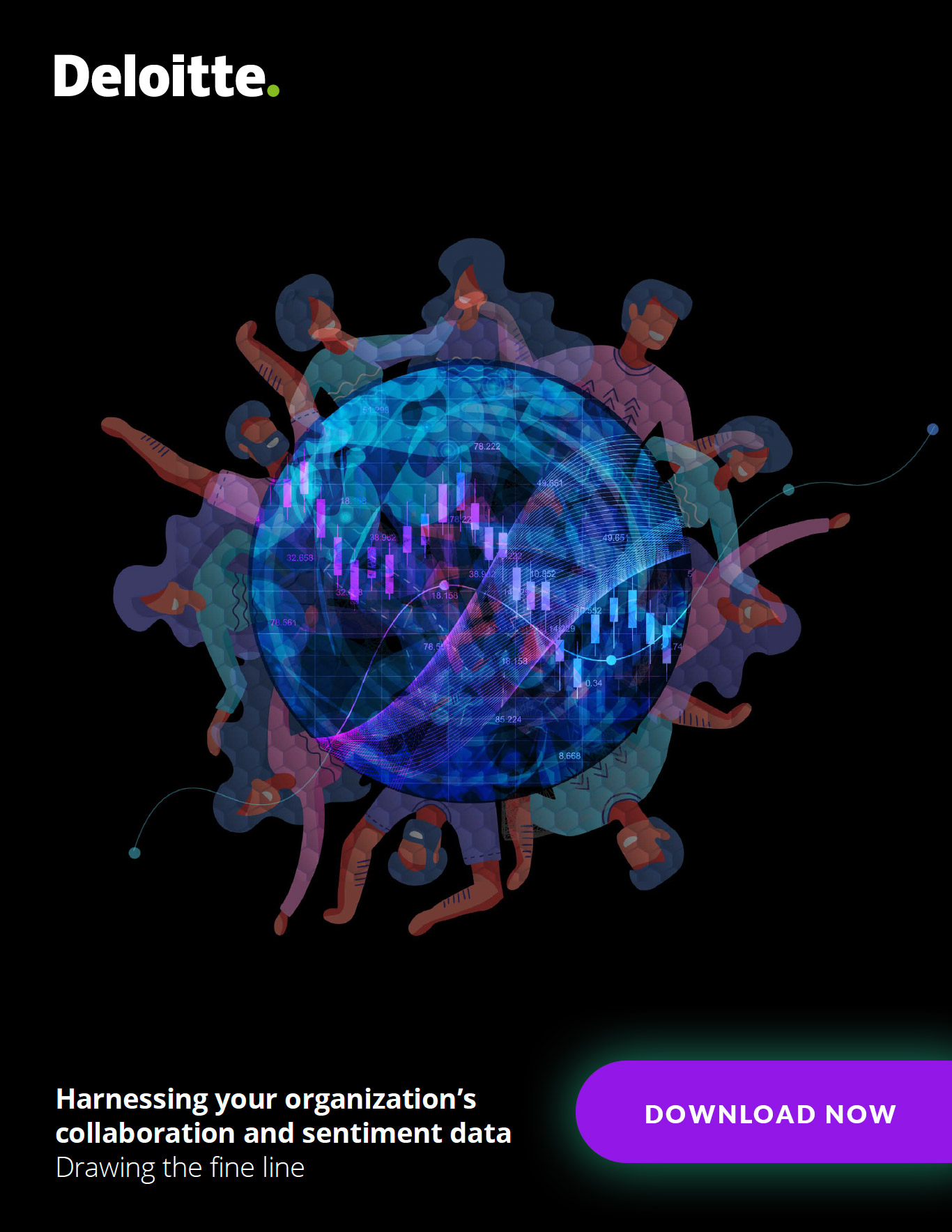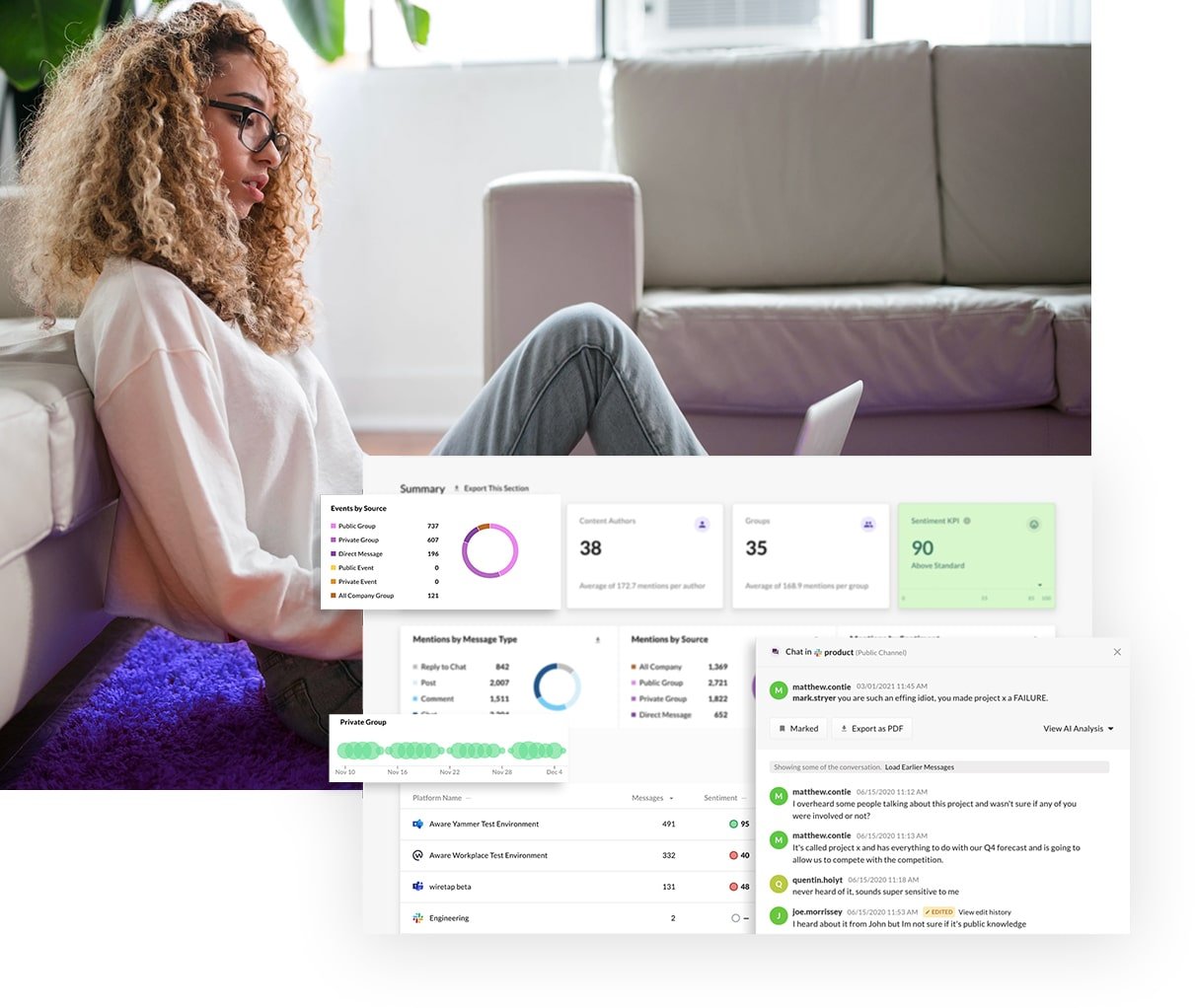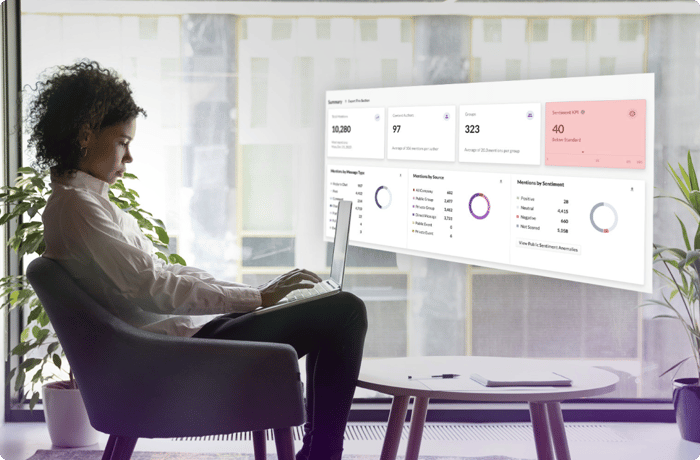Employee Sentiment Analysis for Workplace from Meta: Everything You Need to Know
by Aware
First Published Dec. 2023. Updated Mar. 2024.
Meta Workplace is shutting down on August 31, 2025. Learn what you can do to prepare for a successful transition.
Understanding how employees feel at work is essential to building a strong company culture and ensuring high retention rates. However, it can be challenging to convince employees to be candid with leadership about the topics that concern them most. Sentiment analysis of employee messages in digital workplace apps like Workplace from Meta is a powerful way of listening passively and discovering what is top of mind for your workforce. This post explores what sentiment analysis is, how leaders can use sentiment analysis to improve their business, and what challenges employers must overcome to get authentic, actionable results.
Contents
- What is employee sentiment analysis?
- What are the applications of sentiment analysis?
- What is Meta Workplace used for?
- What are some of the challenges of using Meta Workplace?
- How do you measure employee sentiment?
- What does sentiment analysis measure?
- What is the difference between sentiment analysis and workplace insights?
- How top companies leverage sentiment analysis to create business value
- What are the different types of employee sentiment analysis?
- How does AI sentiment analysis work?
- What are the limitations of sentiment analysis
- How to choose the right tool for sentiment analysis with Meta Workplace data
What is employee sentiment analysis?
Employee sentiment analysis is the practice of understanding the emotions and opinions expressed by employees within the workspace. This can be done through active channels such as surveys and feedback forms, or through passive means like analyzing employee collaboration messages.
Sentiment analysis is a valuable tool for gathering insights into the overall well-being of the workforce. Companies can use employee sentiment analysis to support a wide range of initiatives, from informing top-down comms strategies to improving benefits packages and enhancing the company culture.
What are the applications of sentiment analysis?
Employee sentiment analysis can fulfill numerous use cases across the enterprise, including:
- Improving communications and connectivity: By tracking trends in sentiment enhances overall communication and connectivity.
- Delivering real-time HR insights: HR managers benefit from instant data on employee reactions to company-wide communications.
- Providing feedback on organizational changes: Gathering feedback on changes allows human resources leaders to better support employees during uncertain times.
- Boosting employee morale: Tracking sentiment fosters a sense of transparency and boosts morale, leading to better productivity.
When companies track employee sentiment, they can support a stronger, more open company culture by making workers feel that leadership listens and their opinions matter. This in turns leads to a happier, more committed workforce who feel inspired to do their best.

Aware + Deloitte
Download the whitepaper to learn more about how you can harness your digital workplace collaboration sentiment data.
What is Meta Workplace used for?
Workplace from Meta is a community collaboration tool for businesses, modeled on Meta’s Facebook. It provides a familiar social network interface restricted to each organization’s employees. Using Meta, businesses can consolidate company-wide communications into a single news feed, promote employee collaboration and cooperation, and strengthen their company culture by encouraging coworkers to engage with each other in a more informal setting.
Key features of Workplace from Meta include the ability to disseminate needs via a central feed, create groups for employees based on their location, role, or special interests, and direct messaging features that support interpersonal cooperation and friendships. Workplace also offers a centralized knowledge library where businesses can store company resources, supporting faster and more effective onboarding and training.
Meta Workplace is particularly useful for organizations with a large frontline workforce, such as those in the healthcare and retail industries.
What are some of the challenges of using Meta Workplace?
Although Meta Workplace offers a number of benefits to businesses, there are some challenges to using it effectively. These include:
- Notification overload: Excessive notifications impact productivity.
- Cost considerations: Relative to features, Meta Workplace may be seen as more expensive than some alternatives.
- Low employee engagement: Without a plan to engage employees, organizations may struggle with low uptake or high levels of disinterest.
- Lack of purpose: Leaders can’t expect an enterprise social network to be successful unless it fulfills a need within the business.
How do you measure employee sentiment?
Measuring employee sentiment involves two functions: collecting data and quantifying it. Organizations can get sentiment data from active sources, where employees are solicited for feedback, such as surveys, suggestion boxes, feedback forms, and roundtables. They can also use passive listening like collaboration message sentiment analysis or analyzing write-in survey responses.
Once collected, sentiment data must be quantified. This means assigning a value to how negative or positive the sentiment is. Sometimes this is as simple as asking employees to quantify their own feelings using a 1-10 scale or similar, but other times—especially when using passive data collection—consideration must be given to how the sentiment expressed will be measured.
What does sentiment analysis measure?
Sentiment analysis doesn’t just look at how positive or negative messages are on the surface. It can also be used to identify toxic language or detect bullying and harassment. It involves analysis of not only the words used, but context clues such as the surrounding conversation and the use of non-language features such as emojis or gifs.
By aggregating sentiment scores and segmenting by location, tenure, seniority, and other metrics, leaders can better understand how the mood of the organization shifts and what variables impact the employee experience.
What is the difference between sentiment analysis and workplace insights?
Sentiment analysis focuses of feelings and opinions of employees. Workplace insights is a broader term that covers things like operational efficiency and supply chain logistics in addition to employee experience.
How top companies leverage sentiment analysis to create business value
Countless factors impact employee sentiment, from how fulfilling people find their work to poor leadership, unhappy customers, and supply chain disruptions. By tapping into a steady stream of aggregate opinions, executives can harness a real-time feedback loop that encompasses every aspect of the business and how it runs.
Just some of the ways innovative businesses are already using sentiment analysis include:
- Reducing harassment in the digital workplace
- Identifying health and safety failures
- Understanding the underlying causes of acceptable use violations
Employee sentiment analysis tells a holistic story of the overall health of the company and smart leaders can use it to improve policies and processes at every level.
Discover what you can do with sentiment analysis and people intelligence.
What are the different types of employee sentiment analysis?
Three main methods are available to perform sentiment analysis: rule-based, AI-powered, and hybrid.
Rule-based sentiment analysis takes a prescriptive approach to determining if language is positive or negative. For example, if a sentence includes a curse word, it is scored as negative. While this is a quick way of scoring the sentiment of large numbers of messages, it misses a lot of the nuances of natural speech.
AI-powered sentiment analysis uses natural language processing (NLP) to better understand speech in context and evaluate each message individually based on multiple parameters. This technology can be more effective than rule-based sentiment analysis and accurately scoring messages, however it must be continually trained and refined against the dataset it was designed to analyze, in order to keep up with natural fluctuations in language use.
Hybrid sentiment analysis methods combine rule-based and AI-powered techniques to balance speed and accuracy when scoring message sentiment.
How does AI sentiment analysis work?
Artificial Intelligence (AI) sentiment analysis is a multi-step process that begins with ingesting the data from a source such as Workplace from Meta. Next, the data is cleaned to exclude low-quality messages such as ok, lol, sure, etc. Then NLP processes the messages to put it into a format that computers can understand.
NLP models are built and trained on different datasets and for different purposes. This makes it essential that business leaders choose the right kind of NLP for the data type they want to analyze. People use language differently in email compared to social media, for example, so an NLP trained on email messages—structured, formal—may struggle to accurately process unstructured, informal collaboration chats.
It’s also important to consider how often NLP models are refreshed. Language is constantly evolving, and new slang or meanings can appear at any moment. An NLP released in February 2020 would have been made almost immediately outdated by Covid-19. Unless the NLP can understand the real-time meaning of words then it cannot provide accurate real-time sentiment analysis. Continually refining and redeploying NLP models is therefore essential to a continuous sentiment analysis strategy.
Once the NLP has processed the data, AI and machine learning (ML) models can perform analysis to extract the key themes and topics that impact sentiment and toxicity.
Learn more about the industry’s leading AI/ML for employee sentiment analysis.
What are the limitations of sentiment analysis?
The accuracy of NLP and AI/ML models ultimately depends on a multitude of factors, including the quality of data they ingest and were trained on, and the purpose for which they were created. It’s also important to note that deciphering the sentiment of written speech is incredibly complex, and humans don’t always do it accurately either—just look at a few disagreements on social media to see this in action.
Aware research while training NLP models found that humans disagree about 15% of the time on whether a message is positive or negative in sentiment. Factors such as sarcasm, slang, and even simple misunderstandings can confuse the meaning behind a message. AI technology is therefore assessed against a “near-human” benchmark for accuracy when sentiment scoring, as it’s not reasonably possible to be 100% correct.
To achieve this benchmark, NLP models must be regularly refreshed to stay abreast of fluctuations in language use and meaning—including popular culture references and how people use emojis and other symbols.
How to choose the right tool for sentiment analysis with Meta Workplace data
To overcome these complexities and perform accurate, reliable sentiment analysis in Workplace from Meta requires the use of an AI data platform built and trained to make sense of this dataset. Aware’s proprietary NLP was made for collaboration, and consistently outperforms all competitors—including Google, Meta, and Microsoft—for accuracy when scoring sentiment in this new dataset against a near-human benchmark.
Aware connects natively to Workplace via webhooks and APIs to provide seamless employee sentiment analysis without impacting the end-user experience. Because Aware’s AI and ML models were built to fulfill this specific use case in this particular dataset, they are fast, cost-effective, and extremely reliable, especially when compared to the capabilities of large language models (LLMs). That’s why some of the world’s leading companies trust Aware to provide continuous sentiment analysis in Workplace from Meta, monitoring communications in real time to deliver complete, contextual understanding of employee performance and sentiment and organizational health over time.











